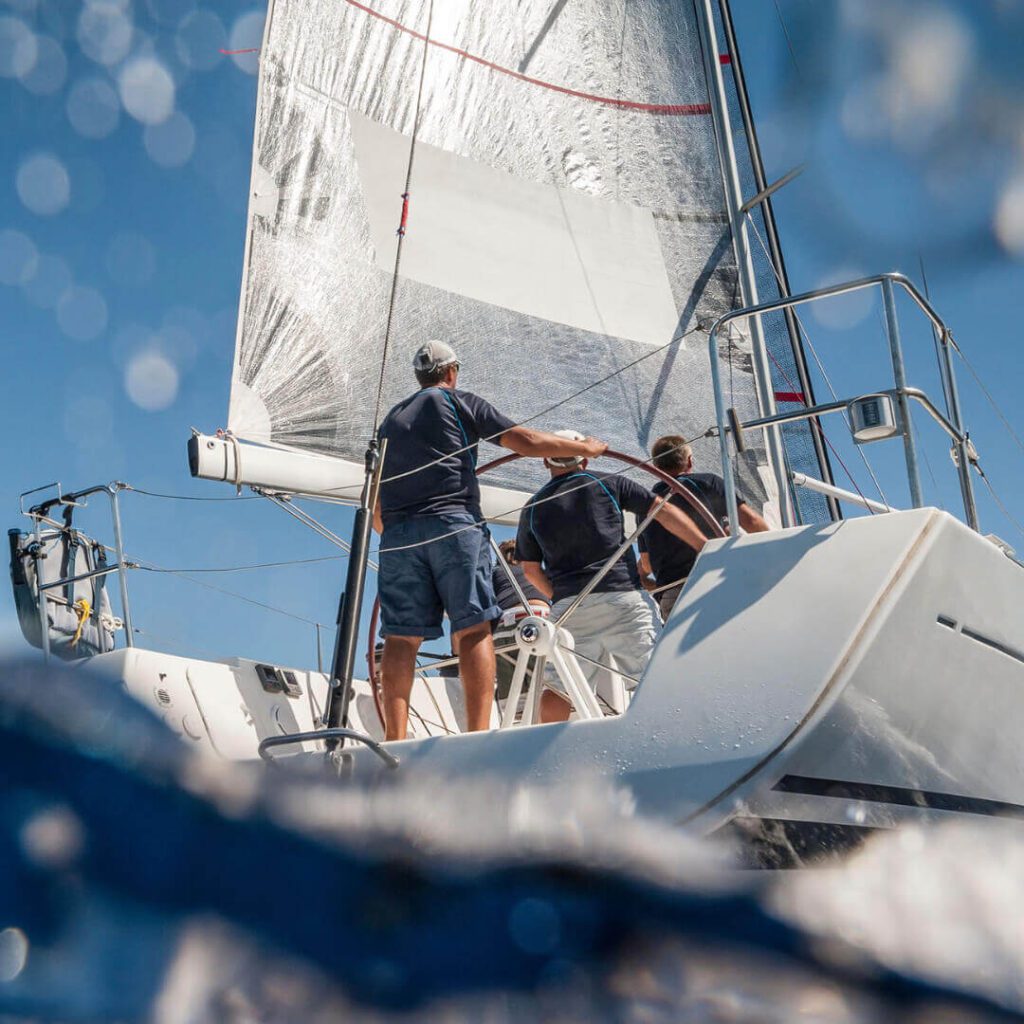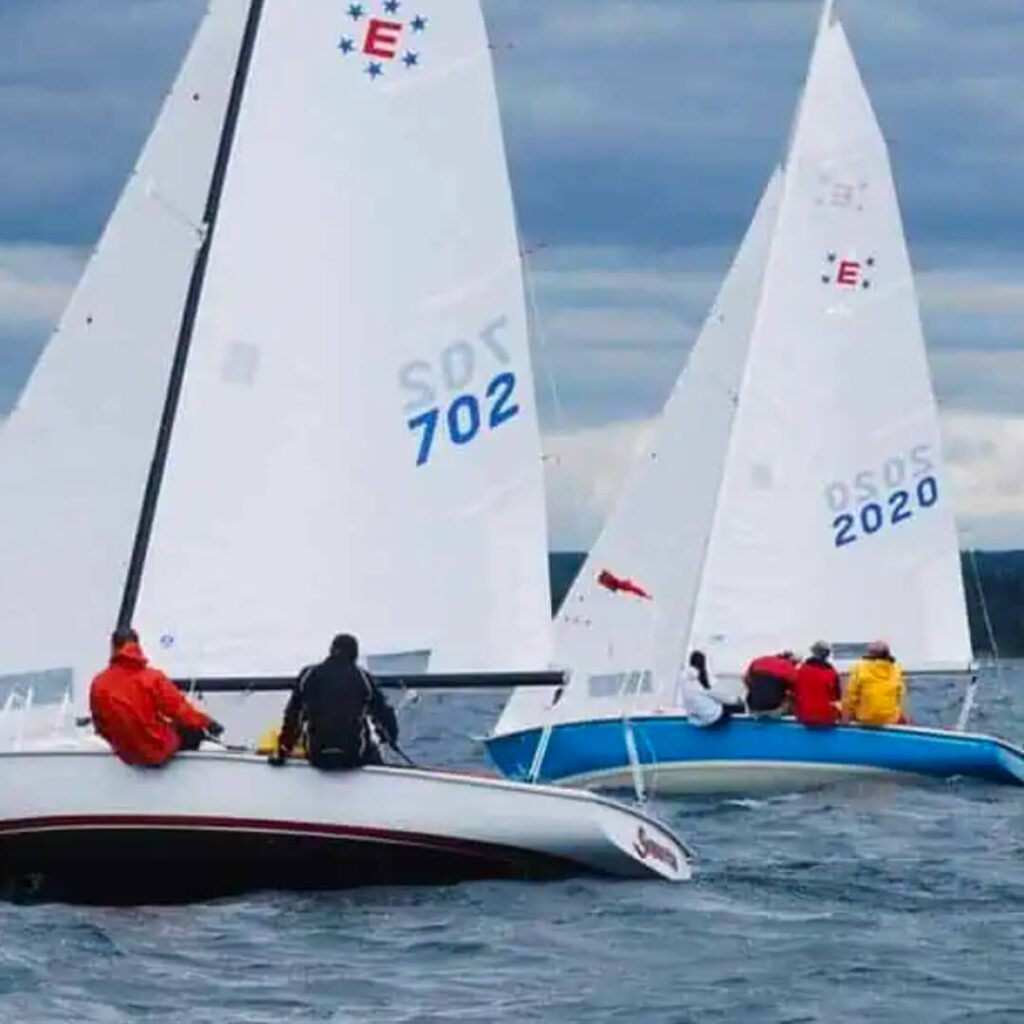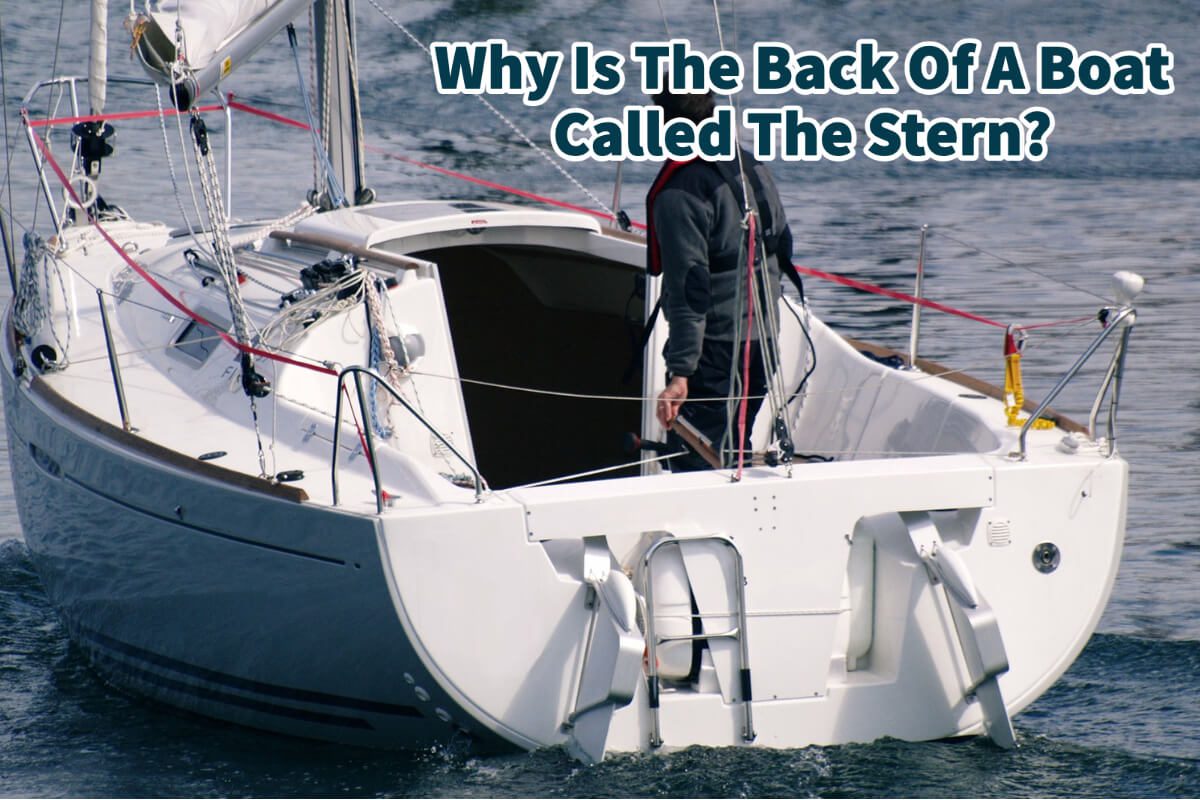If you are into boating, one of the aspects of boating that you should learn is the different parts of the boat. One of these parts is known as the stern.
The back of a boat is commonly referred to as the stern. While this term may seem straightforward, it has a fascinating history and is essential for any boater to understand. Read further to explore the history of the term stern and why boaters need to understand what a stern of a boat is.
Table of Contents
- The History Of The Term Stern On A Boat
- Why Understanding The Stern In Boating Is Important?
- Parts Of A Boat’s Stern
- Related Questions
The History Of The Term Stern On A Boat
The word stern comes from the Old English “stieran,” which means to steer. In the early days of boating, the steering oar or rudder was located at the back of the boat.
The rudder meant it was easier to steer a boat from the back than from the front. Over time, the back of the boat, where the steering oar was located, became known as the stern.

As boats evolved and became more complex, the stern became essential to the boat’s design. And today, the back of all boats is commonly known as a stern.
Today, the stern houses the steering mechanism, or on a sailboat, the tiller is used to direct the rudder and steer the boat. The stern can also be home to the boat’s propulsion system and is an integral part of the boat’s overall stability.
Why Understanding The Stern In Boating Is Important?
Understanding the stern is essential for any boater because it is part of the boat that affects the boat’s handling and stability. For example, the stern’s shape can significantly impact the boat’s performance in different water conditions.
A boat with a flat stern may have better stability in calm waters, while a pointed stern may be better suited for choppy waters.

In addition, understanding the stern is essential for boaters navigating areas with heavy boat traffic or narrow waterways. Knowing where the stern of your boat is located can help you avoid collisions with other boats or objects in the water.
What is located on the back of the stern depends upon what kind of boat you have. A motorboat will have a motor at the back of the stern.
We sail Ensign sailboats when I sail at the Milwaukee Community Sailing Center. The Ensign sailboats do not have a motor, so no motor is attached to the stern’s back.

Instead, at the back of our boat is a tiller attached to a rudder that helps us change the boat’s direction.
Parts Of A Boat’s Stern
The stern of a boat is made up of several different parts—each of these parts of important to the stern. Below are the major parts of the stern of a boat.
The Transom
The most important of these is the transom, the flat or curved surface at the back of the boat. The transom provides a mounting point for the boat’s motor or propulsion system, and in the case of a sailboat, the tiller may be attached to this part.
The transom also serves as a barrier to prevent water from entering the boat.
The Rudder
Another essential part of the stern is the rudder, which is the steering mechanism that controls the boat’s direction. The rudder is typically located at the back of the boat and is connected to the boat’s steering wheel or tiller.
Without a rudder, you can not change direction in the water or adequately steer the boat.
In a sailing vessel, as I sail the Ensign sailboat, we do not have any motor at the back of the boat, so the only way we can sail the boat is with the sails and using the tiller to move the rudder.
The Stern Includes A Boat’s Propulsion System
The stern also includes the boat’s propulsion system, which can be an outboard motor, an inboard motor, or a tiller and rudder. In other words, the stern will help guide your boat.
The propulsion system will depend on the type of boat and the boater’s needs. In a motorboat, you must have a motor attached to the stern.
If you are sailing a sailboat like the Ensign boats I sail, you will need a tiller attached to a rudder.
The term stern has an exciting history and is essential for any boater to understand. The stern of a boat is the part of the boat that affects the boat’s handling and stability, and it is made up of several different parts, including the transom, rudder, and propulsion system.
By understanding the stern, boaters can improve their handling skills and ensure a safe and enjoyable boating experience.
At A Bus On A Dusty Road, we discuss culture, travel, life, sailing, and ex-pat living. We are all about “Living Life As A Global Citizen.” We explore social, cultural, and economic issues and travel.
We would love to have you be part of our community. Sign up for our newsletter to keep up-to-date by clicking here. If you have any questions, please get in touch with me, Anita, by clicking here.
Listen to our Podcast called Dusty Roads. You can find it on all major podcast platforms. Try out listening to one of our podcasts by clicking here.
Subscribe to our A Bus On A Dusty Road YouTube Channel with great videos and information by clicking here.
Related Questions
Milwaukee Community Sailing Center, Top US Sailing School
Milwaukee community sailing center is located on Lake Michigan in downtown Milwaukee Wisconsin. The sailing center is registered as a charity whose primary focus is to teach basic, intermediate, and advanced sailing classes to adults, youth, and children. They are also a charity 501c3 organization that helps many underprivileged children learn the art of sailing.
By clicking here, you can discover Milwaukee Community Sailing Center, Top US Sailing School.
How Much Wind Is Too Much For A Beginner Sailor?
For a beginner sailor, the wind is usually recommended to be under 10 knots. Those who are more experienced or with a larger boat can consider going up to 12 knots of wind. A knot is not the same as miles per hour or kilometers per hour but is faster than these measurements.
By clicking here, you can discover How Much Wind Is Too Much For A Beginner Sailor?
No Experience Sailing, 6 Tips To Get Started
If you are going to take up sailing, you first must get on a boat and find out if sailing is suitable. The best sailors can handle their boats in all kinds and types of weather. Find a class that you can join and get certified. Sailing requires knowledge and skill. Find yourself a sailing community that you can be part of.
By clicking here, you can discover No Experience Sailing, 6 Tips To Get Started.

